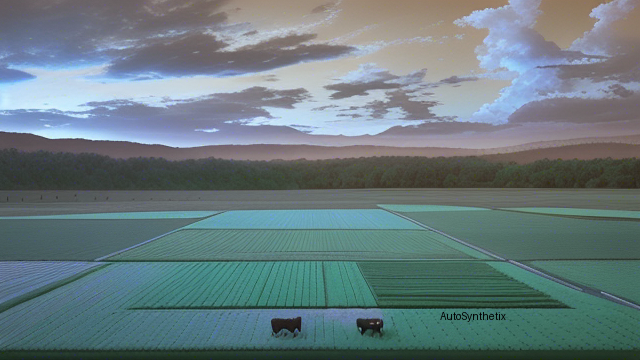In today's fast-paced world dominated by technological advances, even traditional sectors like agriculture have experienced revolutionary changes due to artificial intelligence integrations. One such groundbreaking approach lies at the intersection of dairying and cutting-edge technology known as "pose estimation." This sophisticated technique brings forth immense potential in reshaping modern cattle behavioral phenotyping strategies. A recently published research paper delves deep into this subject, highlighting how advanced computational techniques could optimize healthcare supervisions, improve overall herd management efficiencies, and ensure better animal welfare standards.
**Background:** For centuries, humankind's bond with domestic livestocks, particularly cows, has played pivotal roles in sustaining economic growth worldwide. Tracing back over eleven millennium ago when our ancestors first tamed wild bovines, this symbiotic relationship fostered agricultural progression hand in hand with societal evolution. However, contemporary times call for innovative solutions addressing the ever-growing need for efficient large-scale farming operations while maintaining optimal levels of sustainability. Enter 'Artificial Intelligence,' a game changer driving the fourth industrial revolution.
**Enter AI & Computer Vision**: Incorporating AI technologies within agri-businesses offers unprecedented opportunities for scaling up production processes hitherto reliant upon manual labors. Notably, computer vison applications, encompassing pose estimations, serve critical functions during routine farm activities—such as veterinary assessments or observing natural behaviors crucial for breed improvement programs. These nonintrusive yet highly effective digital tools not merely augment productivity but significantly contribute towards ensuring holistic cow care.
**A Deeper Look At Pose Estimation**: Pose estimation refers to a specific branch under computer vision domain whereby systems identify positional coordinates associated with key points or landmarks present in images depicting living organisms moving around freely. When applied correctly, this powerful algorithm empowers us to monitor subtle nuances related to individual animal motility patterns, locomotion mechanics, gait analysis, among other physiological aspects. Consequently, researchers gain access to detailed insights regarding complex biological mechanisms underlying various traits manifested physically over time – commonly referred to as 'behavioral phenotype.'
**Advancing Dairy Industry Through Cutting Edge Science**: As per the recent publication, the authors emphasize exploring novel ways to bridge academic institutions engaged deeply in advancing scientific understanding surrounding animal cognizant domains alongside commercial enterprises striving hard to maintain competitive edge amid rapid globalization trends characterizing current market dynamics. They envision creating a collaboratively driven, inclusive online platform dedicatedly catering to both parties involved i.e., industry stakeholders seeking practical application oriented knowledge bases coupled with institutes desirous of translating theoretical breakthroughs into real life implementations. Such synergism would undoubtedly propel further innovativeness leading to more refined models benefiting entire value chains spanning throughout the vast expanse of the globally distributed dairy ecosystem.
To sum up, embracing technologically evolved approaches such as utilizing advanced pose estimation algorithms promises significant transformations in managing large scale cattle farms efficiently without compromising quality assurance measures essential for safeguarding public health interests arisen from consumptions derived out of these extensive networks. Moreover, promoting transdisciplinary interactions via collaborative platforms will foster accelerated innovation cycles ultimately redefining future prospects of sustainable agricultural intensification initiatives geared toward meeting burgeoning demands placed upon them. \]
Source arXiv: http://arxiv.org/abs/2408.06336v1
